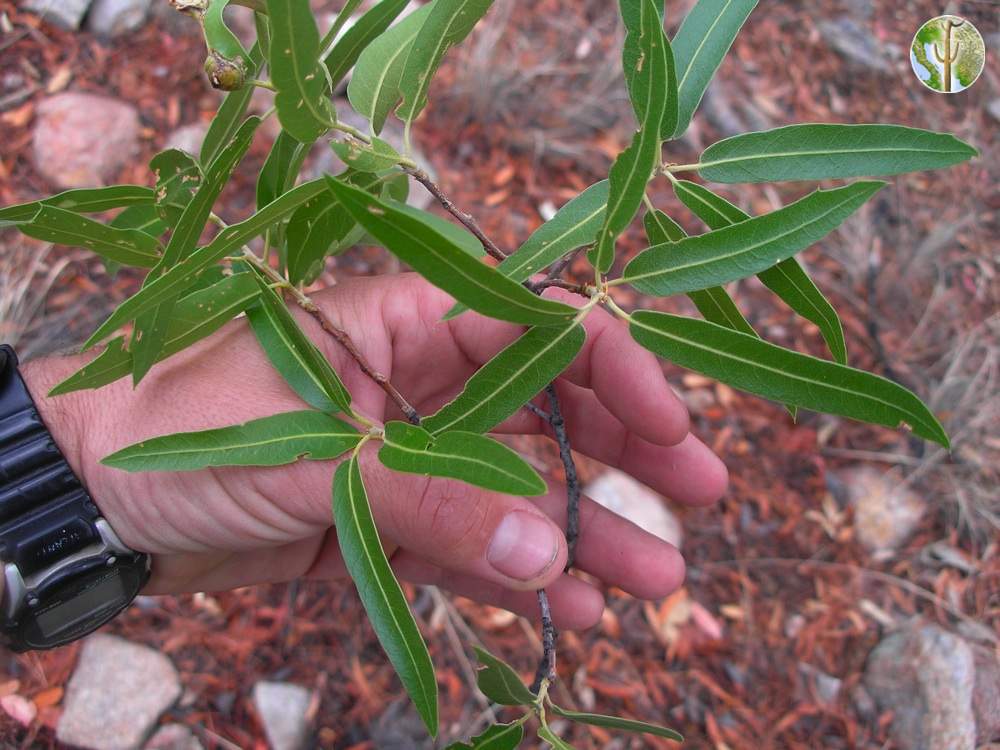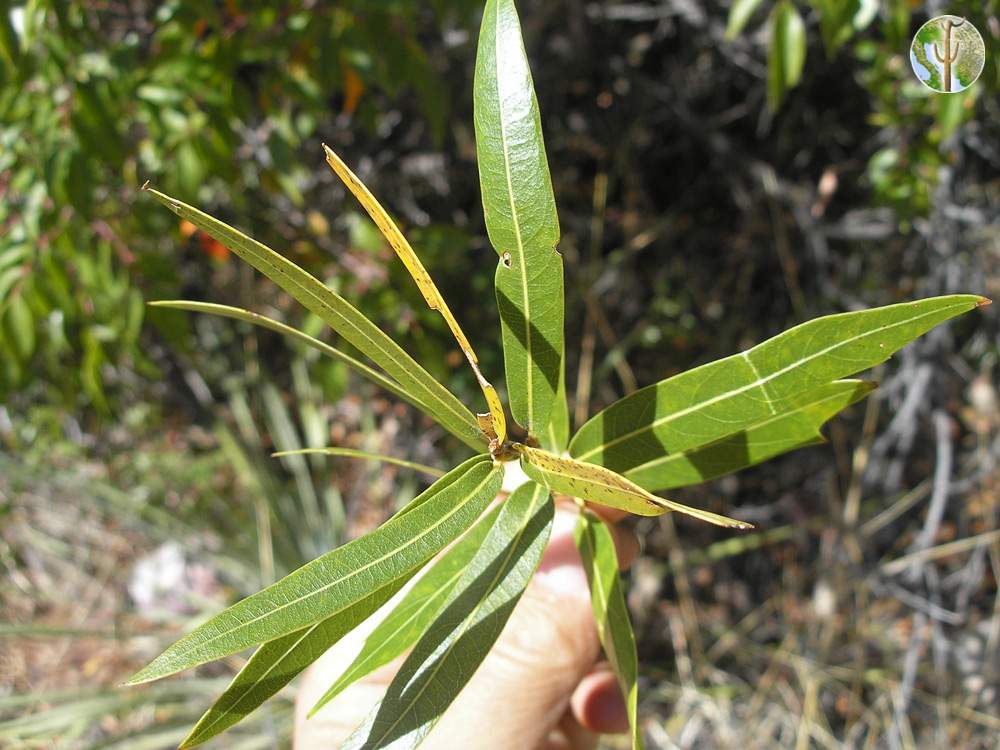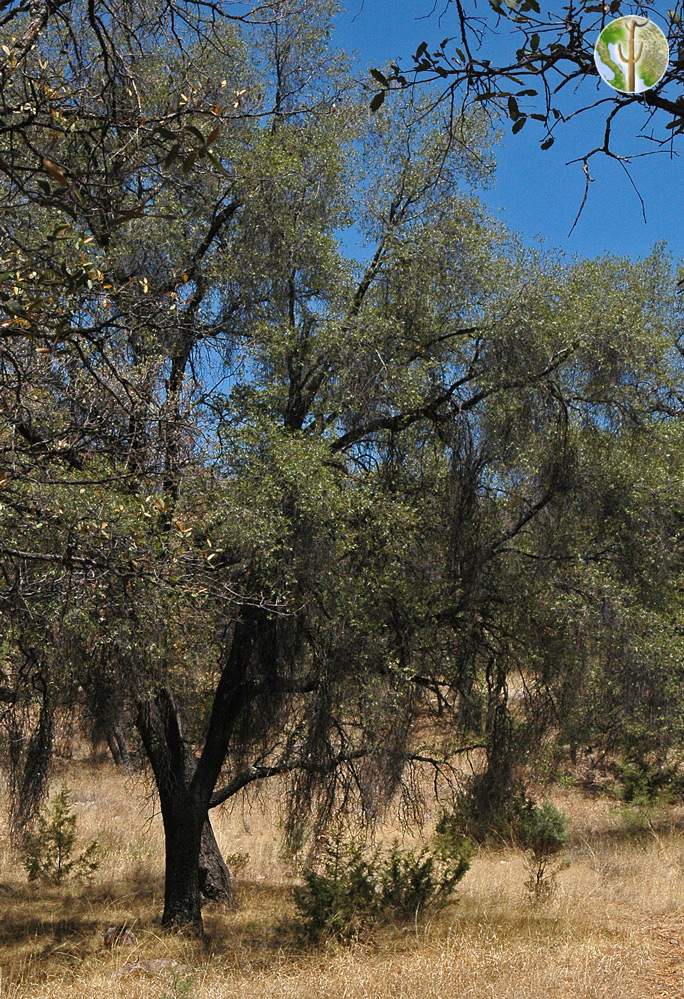Quercus viminea
Willow-leaf oak is closely related to emory oak, but in some areas they appear to intergrade. Its leaves are generally shinier, slimmer, longer, and brighter green. Branch tips are generally less robust than emory oak. There is overlap in range of the two species in Sonora, but generally as one heads south Q. emoryi fades out as Q. viminea becomes more common. in areas of overlap they can grow at different elevations with emory oak at the lower end of the oak zone, often with or just above blue oak. Quercus viminea generally grows in the mid to upper oak woodland zone and sometimes into the pine/oak woodland in the northern part of its range.
Other differences that help to distinguish it from emory oak where they overlap: the growth form of willow-leaf oak is often different with ascending, less angular branching; emory oak (less in large specimens) generally have one main trunk with very stiff, thick, angular branches coming off more or less parallel to the ground with hard angles whereas willow-leaf has a much more flowing, upward angling branching pattern; when the leaves dry on the plant emory oaks are generally a tan to brownish or slightly rusty color, where willow-leaf are a fairly bright red.
The only record in Arizona is in the Patagonia Mountains from the early 1900's until May 2013 when Tom Van Devender collected specimens also in the Patagonia Mountains. Quercus viminea is common in the Sierra Pinito just across the border, as well as other northern Sonora Sky Islands. It is interesting that they seem to be absent from any other Arizona Sky Islands. See Northern Distributional Limits Of The Mexican Willow Oak (Quercus Viminea) In Arizona, Sonora, And Chihuahua for further info.



